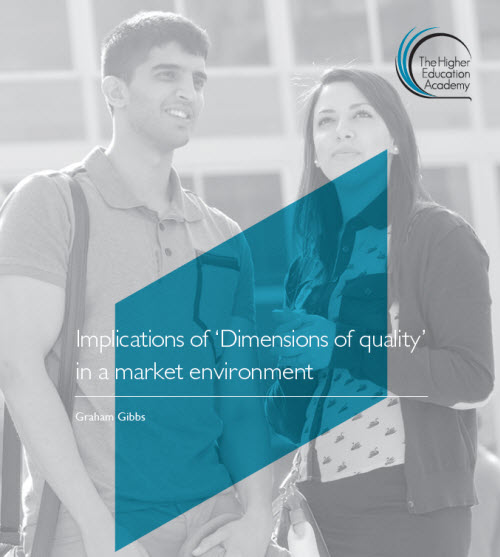Implications of 'Dimensions of quality' in a market environment

 Graham Gibbs has followed up his Dimensions of quality (York: HEA, 2010) with a new report entitled Implications of ‘Dimensions of quality’ in a market environment (York: HEA, 2012) which has just become available.
Graham Gibbs has followed up his Dimensions of quality (York: HEA, 2010) with a new report entitled Implications of ‘Dimensions of quality’ in a market environment (York: HEA, 2012) which has just become available.
In doing so, he presents a considered and constructively critical assessment of current pressures, policies and practices at Higher Education institutions across the country, while also advocating a more individually tailored, yet proactive, approach by each institution to the realities they face today in learning and teaching.
The foreword is provided by the Minister of State for Universities and Science, and in it David Willetts states: “Every student deserves an excellent higher education experience. No one would argue with the view that an individual’s learning experience and success depends as much on their own engagement as with the actions of the institution and its staff. Effective learning is a two-way street. Yet it is often easier to find out about an institution’s social activities than it is to find meaningful information on the teaching environment or the course outcomes” (p.6).
This appears to offer us some room to consider the increasingly advocated view of the student as partner, while also suggesting where the emphasis should really be when constructing and directing a wider student experience.
The fact is that this report provides us all with much needed food for thought in a whole host of areas.
For example, there is coverage regarding the role of programme teams (p.10), the implications for quality assurance of “class size, cohort size, extent of close contact with teachers, the quality of the teachers, the extent and timing of feedback on assignments and the extent of collaborative learning” (pp.14-6), the debates surrounding contact hours, etc., as well as the argument about students themselves being an ‘underutilised resource’ when instead they might be given “an active role, such as collaborative learning, peer tutoring and self- and peer assessment” (p.18).
It will be very interesting to see how this sort of contribution supports the debates which are taking place within our sector, and the responses to a changing environment.